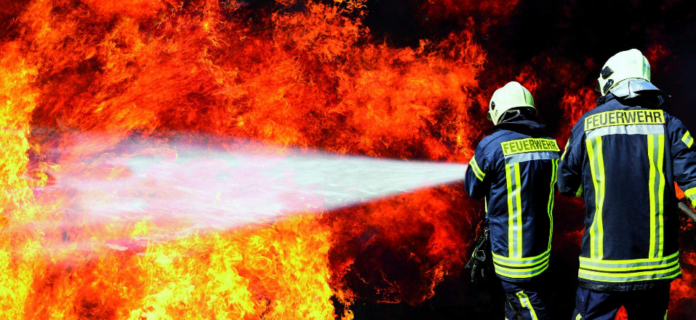Introduction
In the bustling urban landscape of Auckland, the need for robust fire protection measures cannot be overstated. Beyond the breathtaking skyline and vibrant communities lies the responsibility of safeguarding lives and property from the unpredictable threat of fire. In this comprehensive guide, we delve into the world of fire protection in Auckland, exploring the importance of proactive measures, the role of technology, and the collaborative efforts that contribute to a safer and more resilient city.
Understanding the Fire Risk Landscape
Auckland’s Unique Challenges
As a city characterized by a diverse mix of residential, commercial, and industrial areas, Auckland presents unique challenges when it comes to fire protection. The dense urban fabric, coupled with the presence of heritage buildings and a proximity to natural landscapes, demands a tailored approach to address the multifaceted fire risks that can arise.
Urban Density and Fire Dynamics
Urban density, while fostering a vibrant and interconnected community, also increases the potential impact of fires. High-rise buildings, commercial establishments, and residential clusters require meticulous planning and implementation of fire protection measures to mitigate the risks associated with rapid fire spread.
The Imperative of Proactive Fire Protection Measures
1. Early Detection Systems
Early detection of fire incidents is crucial for swift response and damage limitation. Fire protection in Auckland involves the integration of advanced fire detection systems that can identify the presence of smoke or flames at the earliest stages. These systems are designed to trigger alarms and notifications, alerting occupants and emergency services promptly.
2. Strategic Placement of Fire Extinguishing Equipment
Strategic placement of fire extinguishing equipment is a fundamental aspect of fire protection measures. Ensuring that fire extinguishers, hydrants, and sprinkler systems are strategically located throughout buildings and public spaces enhances the ability to contain and suppress fires effectively.
3. Emergency Exit Planning
In the event of a fire, clear and accessible emergency exits are paramount for the safe evacuation of occupants. Fire protection strategies in Auckland prioritize the planning and maintenance of well-marked exit routes, ensuring that individuals can swiftly and safely exit buildings during emergencies.
4. Regular Fire Drills and Training
Effective fire protection goes beyond the installation of equipment; it involves the education and preparedness of occupants. Regular fire drills and training sessions are integral to ensuring that individuals know how to respond in the event of a fire, reducing panic and enhancing the overall safety of a building or community.
The Role of Technology in Modern Fire Protection
1. Smart Fire Detection Systems
Advancements in technology have given rise to smart fire detection systems that utilize sensors, artificial intelligence, and real-time monitoring. These systems can distinguish between false alarms and genuine fire incidents, providing a more accurate and efficient response.
2. Automated Suppression Systems
Automated suppression systems, such as sprinklers and gas-based extinguishing systems, have become more sophisticated and responsive. These systems can detect and suppress fires in their early stages, minimizing damage and reducing the risk of injury to occupants.
3. Integrated Building Management Systems (BMS)
Integrated BMS platforms play a crucial role in coordinating various aspects of fire protection. These systems enable centralized monitoring of fire detection, suppression, and evacuation systems, allowing for a coordinated and swift response to fire incidents.
Collaborative Efforts for Comprehensive Fire Protection
1. Government Regulations and Compliance
Government regulations play a pivotal role in shaping the landscape of fire protection in Auckland. Building codes, fire safety standards, and compliance requirements set by regulatory bodies ensure that structures adhere to minimum safety standards and incorporate necessary fire protection measures.
2. Community Engagement and Awareness
Creating a fire-safe city requires active engagement with the community. Awareness campaigns, educational initiatives, and community forums contribute to informed decision-making and foster a collective commitment to fire safety.
3. Public-Private Partnerships
Collaboration between public entities, private organizations, and emergency services is essential for a holistic approach to fire protection. Public-private partnerships can lead to improved infrastructure, streamlined response mechanisms, and shared resources for more effective fire prevention and management.
The Future of Fire Protection in Auckland
1. Advancements in Fire-Resistant Materials
The development of fire-resistant materials is an ongoing focus in the field of fire protection. Innovations in building materials that resist the spread of flames and withstand high temperatures contribute to enhanced structural fire safety.
2. Data Analytics for Predictive Modeling
The use of data analytics and predictive modelling is emerging as a powerful tool in fire protection. Analyzing historical data, weather patterns, and urban planning information can help predict potential fire risks, enabling proactive measures and resource allocation.
3. Drone Technology for Surveillance
Drone technology is increasingly being explored for fire surveillance and response. Drones equipped with thermal imaging cameras can provide real-time insights into the spread of fires, allowing for more accurate decision-making by emergency services.
Conclusion
As Auckland continues to grow and evolve, so too must its approach to fire protection. Beyond the immediate response to fire incidents, safeguarding lives and property requires a proactive, multi-faceted strategy that incorporates early detection, technology integration, and collaborative efforts. The city’s commitment to fire protection serves not only as a shield against flames but as a testament to the resilience and safety of its communities. By embracing innovation, adhering to regulations, and fostering community awareness, Auckland is poised to navigate the evolving challenges of fire protection in Auckland, ensuring a safer and more secure urban landscape for generations to come.


